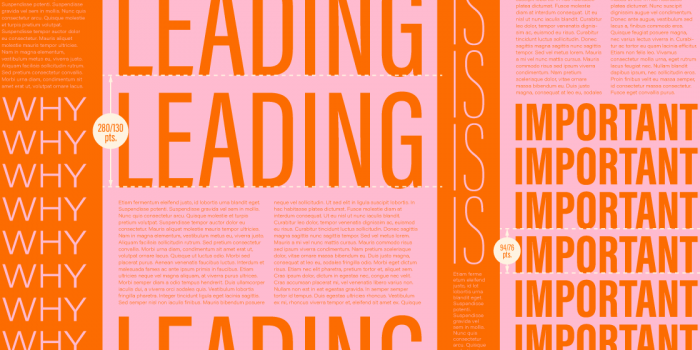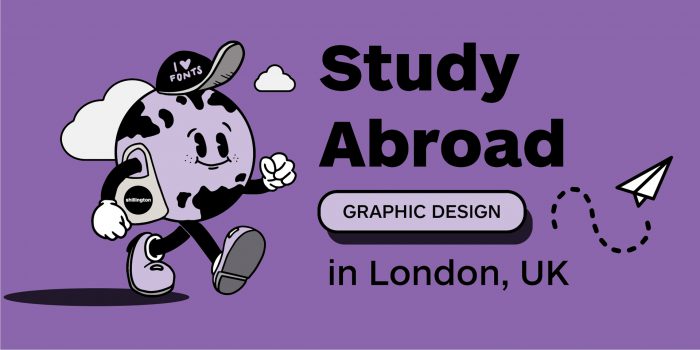My Shillington Review by Irina Manning

In my previous article, “How I Became a UX Designer In Less than a Year,” I talked about my experience going through a career change. One of the most significant steps I made in that process was attending a full-time intensive design course at Shillington School of Graphic Design in New York City. For those of you who don’t know: I was completely new to design prior to starting the course and had serious doubts I would make it in the design world.
I made it. I have worked in the tech industry as a UX designer for over five years now have been lucky to work alongside the most talented people on the most exciting projects at companies ranging from successful New York startups to Fortune 500 firms in the USA and Europe.
I started a design and development agency. I launched several profitable startups of my own. Need I mention that I had an opportunity to work and make money WHILE traveling the world?
Looking back I realize that I owe my career to a combination of factors: determination, persistence, grit, hard work, constant desire to learn more etc. But as far as education goes, Shillington School played a huge part in my success as a designer. Here is what I think makes it an excellent design school:
1. Curriculum
I think the best thing about Shillington is their curriculum. It is very well crafted and carefully thought through. There are a few things that make it unique.
First, it teaches you design starting from the very basics and eventually moving to the most intricate areas of graphic design, including web and UX. The increase in complexity happens very gradually. Even people completely new to design (like I was) don’t feel discouraged and are able to build upon their knowledge with each new brief.
Second, you learn not only design theory but also every design software program that you may need in your future career. I have to add here that when I was a student at Shillington we only learned about the Adobe Creative Suite design software. I hear that Shillington has recently added learning the ever so popular Sketch App to their curriculum—so important for any UX designer to learn. That tells you how quickly they adapt to new situations and are up-to-date with new tendencies in design.
Third, the theoretical part of the curriculum is very limited (but more than sufficient for aspiring designers). The focus of Shillington education is to help you learn by doing. Small chunks of theory are followed by practical tasks and design briefs that students are to work on to reinforce topics just learned. A lot of briefs are web, mobile and UX based.
Finally—and most importantly—the goal of the design course is to emulate real-life work conditions. Design briefs, constraints, deadlines. Every day of the course students are faced with a very realistic work situation where they have to create whatever “the client” is asking for in the (usually quite short) time available. Not only do student have to make sure the end result is visually stunning, original, pixel-perfect and all—they also have to finish before the deadline. No pressure.
2. Teachers
The teachers at Shillington are usually practicing designers themselves with a lot of experience, knowledge and interesting stories to share.
The classes are normally thought by two teachers who take turns in presenting new topics and are both always there to help students with any questions, problems or difficulties. Having two instructors teaching classes is great because each of them usually has something useful and interesting to contribute to the teaching process. The material is always presented from two different perspectives—you almost end up learning twice as much.
The teachers I personally had at Shillington were simply fantastic. Extremely talented, dedicated, passionate and always eager to share their knowledge. There was never a technical question that I didn’t get an answer to (and I had A LOT of questions). Among many other things, I learned how to approach every design project with a process set in place, how to make my mockups pixel-perfect, how to use the design software efficiently and how to yield the most visually appealing, creative and inspiring results.
The amount of knowledge, support and encouragement I received from both of my instructors is absolutely invaluable. Thank you, Peter and Cindy. I wouldn’t have made it without you, guys.
Last but not least, the class size is optimal—I think we had about 12 or 14 students in our class which allowed for plenty of individual attention from our teachers.
3. Location
I can only speak to the awesomeness of the New York City location because that’s where I attended the course. The school is located in the middle of the coolest city on the planet. Need I say more?
However, if you are not in the United States—don’t fret. There are locations in Sydney, Melbourne, Brisbane, London and Manchester. I am sure they are just as amazing!
4. Events, workshops and talks
Shillington is great at organizing design events, outings, field trips, workshops, talks and more.
During my three-month course at Shillington, we had numerous workshops dedicated to design and typography in particular.
One of the many great things that I got out of my Shillington course is the long lasting love for typography.
All instructors teach their students the appreciation for that very important aspect of design. Once a week we had an “I Love These Guys” event. Every student had to present a designer, design agency, design project that they loved. A fantastic source of inspiration.
Several times we had renowned guest designers and entrepreneurs talk about their creative journeys and success stories. Right around graduation time, there was also a panel of former students who answered all our questions regarding their life after Shillington. I found that very encouraging and extremely helpful.
There were also visits to art galleries, museums and design events.
Last but not least—a huge graduation party where all of us got to present our finished portfolios to each other, our guests and potential employers. That was a fun night.
5. Inspiration
Just studying and working alongside such talented people as my instructors and fellow students were priceless. It was such a joy to look at the creative result of each other’s work during each group design critique (we had lots of them). It is still amazing to me how one and the same design assignment can be interpreted in so many mind-blowingly (is that even a word?) different creative ways.
Every time I looked (and still look) at what Shillington students are capable of creating, I am in awe.
It makes me want to try harder, be much better, reach even higher. See for yourself: here is their Instagram page. You can hardly find a more inspiring social media account.
6. Opportunities
The goal at Shillington is not only to teach you design but also to teach you practical skills of talking to a client, collaborating, marketing yourself, looking for a job and so on. The graduates are not guaranteed to get a job upon completion of the course but they are presented with plenty of great opportunities.
Normally, the students work on realistic but nevertheless fictional briefs. But once we got to work on a real design brief for a real client. The client was invited to look at us working on their assignment and (!) even picked the finished design of one of the students for their new marketing campaign. What a great jumpstart to a new designer’s career.
The graduation party and the portfolio presentation is always a big event full of opportunities for new designers.
You never know when a potential client, employer or headhunter, looking for new talent, will be among guests.
I remember getting my first paying client that night after a friend of mine—a famous writer—looked at my portfolio and hired me to redesign his professional website.
7. Portfolio and website
The last but extremely important reason to study graphic design at Shillington is the portfolio. In addition to all the knowledge, inspiration, self-confidence and numerous opportunities that you get, you actually leave the school with something even more tangible—a beautiful high-quality portfolio that you’ll be proud to present when the time comes to go to job interviews.
The last few weeks of the course are dedicated solely to carefully crafting a collection of your best student work. It starts with your instructors (who know you and your strengths so well by now) helping you pick your strongest projects. After the list of projects is finalized, the last and the most intense part of the course commences.
Together with the instructor’s students work hard on bringing their best designs as close to perfection as possible.
Make sure you don’t make any plans for those last two weeks of the course—you won’t have time. You will be stressed out, lose sleep, and quite possibly cry at some point. But brace yourself. It will be over. And you will be proud of yourself and what you could accomplish. I know, I was.
My last piece of advice here: you’ll probably be given a choice of making a physical portfolio book or a digital version of it. (Don’t even think you can do both. Too much work and too little time). As a UX designer, you will most likely use your iPad to present your portfolio to employers or have it stored online. No need to go through the process of choosing a high-quality printing shop, binder, paper. Save yourself precious time and money. Create a stunning digital portfolio while you have the invaluable opportunity to have Shillington instructors help you.
That said…
…just like everything else in life, Shillington School does have a few downsides that you may want to consider prior to applying for their graphic design course. As much as I loved the experience of being a Shillington School student, I will list a few possible disadvantages below. Just to be fair.
1. No entrance test
First and foremost, Shillington doesn’t vet students prior to the course, that is to say, there is no entrance test. So, prospective students have to make sure that they are able to keep up with the very (I mean, VERY) fast-paced course. Although the curriculum is broken down into digestible pieces and is presented gradually from easy to difficult, the course progresses very quickly. And there is a lot of new technical information to learn that may be harder for some people to grasp. Most of my classmates have finished the course successfully, but we did have one student drop out early in the course because she realized that she couldn’t keep up.
2. Rather expensive
I have to admit the Shillington Course is not the cheapest. I found it to be more than worth it, but if money is a problem for you, you may want to look for a more affordable alternative.
3. Not purely UX design focused
Since I mostly write articles aimed to help UX designers, it is worth mentioning that the Shillington course is not exclusively focused on digital design. A lot of it is purely graphic design and print design, i.e. creating posters, editorials, brochures, logos, brand identities. I personally was completely new to design and found it very useful to learn the very basics first. I think knowing how to go about designing a quality logo or a brand identity helps me in my user experience related work and makes me a more well-rounded designer.
I am not saying that you won’t learn digital design at Shillington. You will: there are plenty of briefs aimed at creating digital products such as websites, mobile apps, digital publications. But if you’re interested in and want to focus entirely on UX design for software—the Shillington school may not be for you.
4. Most teachers are designers, not teachers
As I already mentioned, the instructors at Shillington are fantastic. Extremely knowledgeable, supportive and inspiring. Although I have to mention that not all of them are professional educators, that is professionals that have been taught how to teach graphic design. As far as I am concerned, they do nothing but an amazing job teaching, but if you are a kind of person for whom professional credentials are important—then college education may be a better option for you.
5. Stressful at times
The course at Shillington really is very intensive. You have to be prepared to do a lot of learning very fast and in a limited amount of time. That doesn’t only mean being at the school from 8 am to 5 pm every day (if it’s a full-time course) but also working on briefs, doing homework and working on assignments at home. I personally spent numerous sleepless nights and quite frankly had a couple of meltdowns—that’s how hard and stressful it was, especially during portfolio preparation time. Again—it’s doable and definitely worth it. But brace yourselves: it WILL be stressful.
6. No diploma
Kind of irrelevant nowadays, in my opinion (especially if you are in the United States), but you don’t get a formal document of completion upon graduation. Nothing like a real diploma that you can present to your employer—just a certificate printed on a piece of paper. That said, I have never been asked to present it at interviews. And I haven’t heard of a lot of people who have been. So, this one is not a big deal, I think.
Conclusion
I am at the Samara airport now waiting for my flight to Germany, working and having a glass of wine (I need it—I am a nervous flyer). I am thinking of myself back in September 2013 when it was time for me to start the intensive design course at Shillington School, I was a little nervous… I thought I’d be the only student who didn’t know anything about design. I was afraid I’d look incredibly stupid. To my relief, I found out that a lot of students there were also on their path to changing careers and they were also completely new to design. I wasn’t the only one. I also found amazing teachers who were so extremely supportive and inspiring.
The course is not easy. It is intense, it’s fast-paced, it’s challenging. Especially for complete beginners. But it’s also exciting, inspiring and brilliant.
- Shillington School is a great compromise for people wanting to change careers: something in between self-studying (not enough mentorship) and a college degree (takes years to finish).
- The Shillington course is expensive. It is not easy. It’s intense, it’s fast-paced, it’s challenging. Especially for complete beginners. But it’s also exciting, inspiring and brilliant.
- I started the Shillington course not knowing anything about design and I left with a lot of useful knowledge, a great portfolio and confidence that I can indeed make it in the design world.
- There are other design schools that do something similar to what Shillington does, but I can only speak to my own experience. Hence, this humble review.
Thanks to Irina for writing this review about her Shillington experience! This article was originally published on Medium.
Would you love to make a change at Shillington? Study design 3 months full-time or 9 months part-time at Shillington in Sydney, Melbourne, Brisbane, New York, London or Manchester.
Want to win some amazing prizes and stay in the loop with all things Shillington? Sign up to our newsletter to automatically go in the draw.







